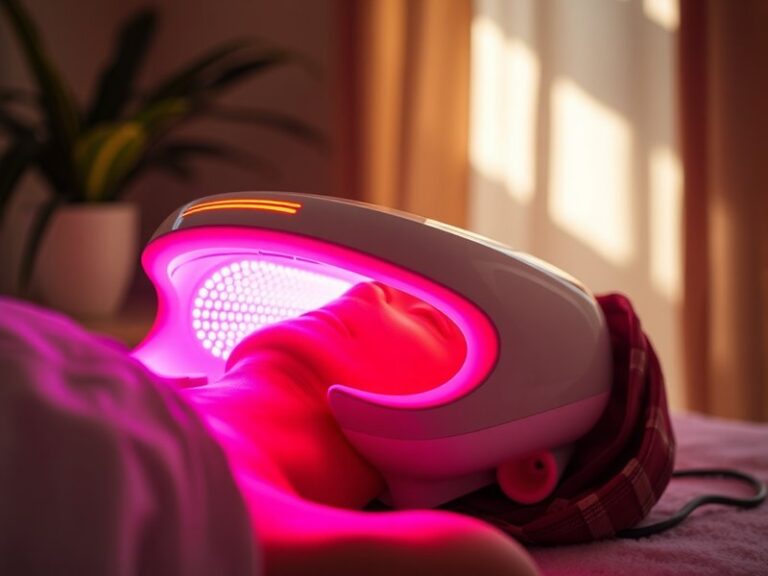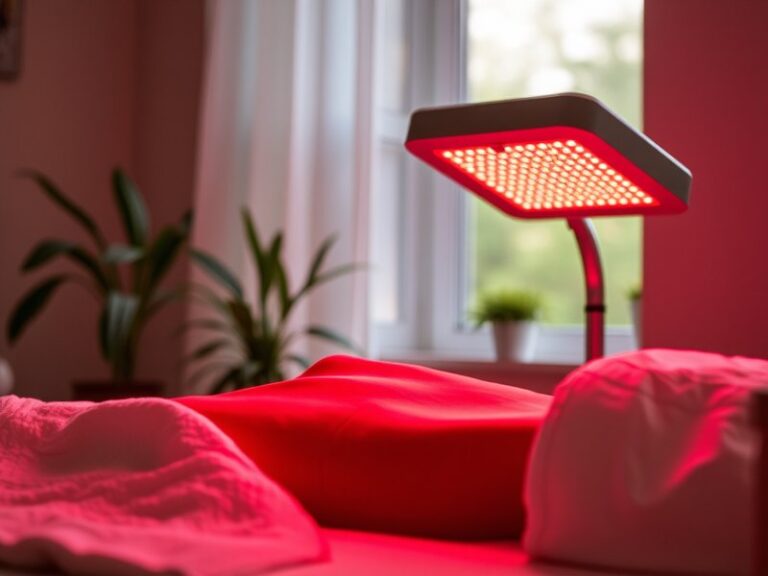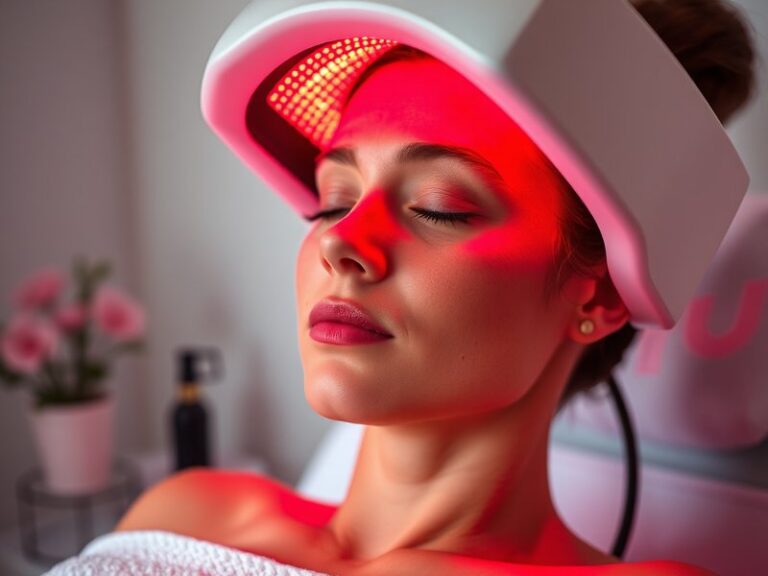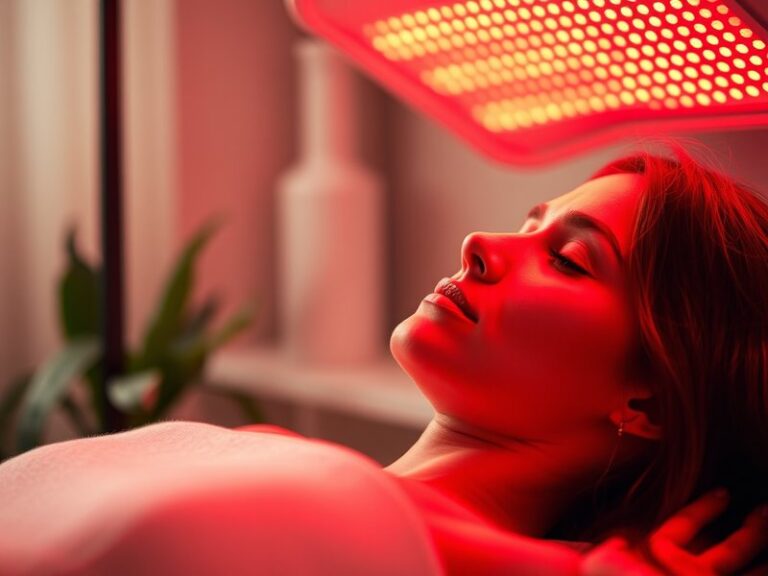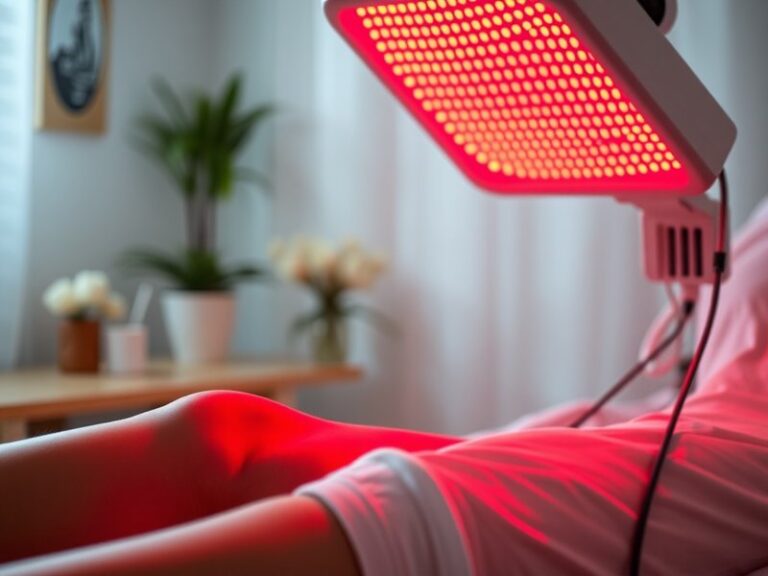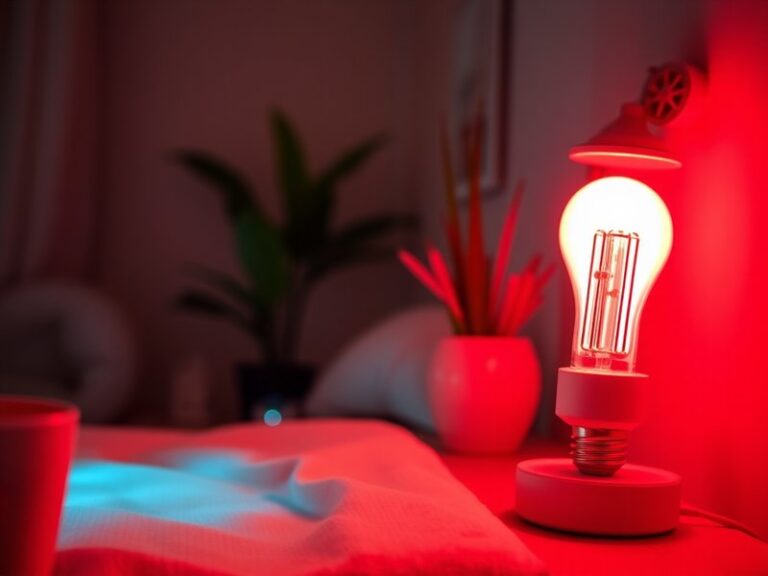What Is The Purpose Of Red Light Therapy?
What Is The Purpose Of Red Light Therapy?
Have you ever wondered how light can heal?
Red light therapy (RLT) has been gaining popularity as a non-invasive treatment method for a variety of health issues. This article will explore the fundamentals of red light therapy, its benefits, possible applications, and considerations you should bear in mind before undergoing treatment.
Key Takeaways
- Red light therapy uses specific wavelengths of light to promote healing and regeneration.
- It has potential benefits for skin health, pain relief, and muscle recovery.
- Those considering red light therapy should evaluate its risks, alternatives, and their personal health needs.
What is Red Light Therapy?
Red light therapy is a treatment that uses low-level wavelengths of light to stimulate cellular activity and enhance the body’s natural healing processes. It typically involves exposure to light in the red and near-infrared spectrum, which penetrates the skin and is absorbed by the mitochondria in cells, promoting energy production.
This therapy can vary in application—from specialized light devices in clinical settings to at-home gadgets and LED panels. Understanding the mechanics of red light therapy can help illustrate how it aids in healing and wellness.
How Does Red Light Therapy Work?
The mechanism of red light therapy is rooted in photobiomodulation. When red light penetrates the skin, it is absorbed by mitrochondrial cytochrome c oxidase, leading to increased adenosine triphosphate (ATP) production. This boost in ATP stimulates cellular repair, reduces inflammation, and promotes tissue regeneration.
What are the Benefits of Red Light Therapy?
Red light therapy offers a range of benefits that extend beyond mere cosmetic applications. The following points delve deeper into these advantages.
Skin Health Improvement
One of the most renowned benefits of red light therapy is its positive impact on skin health. It has been shown to reduce wrinkles, fine lines, and scars. By stimulating collagen production, RLT helps in achieving a more youthful appearance.
Read our complete guide How many days to do red light therapy?
Pain Relief
Many users report decreased pain and inflammation from conditions such as arthritis and chronic pain. RLT can help reduce discomfort by increasing blood flow and promoting recovery in damaged tissues, providing a natural alternative to pain medications.
Muscle Recovery and Performance
Athletes frequently turn to red light therapy to accelerate muscle recovery post-exercise. By enhancing circulation and reducing oxidative stress, RLT can minimize soreness and improve performance in subsequent training sessions.
Enhanced Wound Healing
Studies indicate that red light therapy can promote faster wound healing by improving the cellular regeneration process. It is often used in rehabilitative settings to support recovery from surgical procedures and injuries.
Is it Possible to Do Red Light Therapy at Home?
Yes, many products on the market allow for home-based red light therapy, making it accessible to a broader audience.
What are the Advantages of Home Red Light Therapy?
Investing in a home device offers convenience and potential cost savings over time.
- Accessibility: At-home devices are perfect for daily use without the need for appointments.
- Long-Term Cost Efficiency: While initial investments may be higher, it can save money in the long run compared to frequent clinic visits.
What are the Disadvantages of Home Red Light Therapy?
Despite the benefits, there can be downsides to consider.
- Effectiveness: At-home devices may not deliver the same intensity of light as professional equipment, potentially affecting results.
- Safety Concerns: Improper use or positioning could lead to ineffective treatment or skin irritation.
What are the Things to Consider Before Using Red Light Therapy at Home?
Before embarking on at-home red light therapy, it’s critical to consider several factors.
Device Quality
Choose reputable brands that provide devices with proven effectiveness and quality. Look for clinical studies backing their claims.
Intensity and Wavelength
Ensure that the device emits the correct wavelengths, typically between 600 nm and 850 nm, for effective therapy.
Skin Type and Conditions
Different skin types may react differently to red light therapy. Consulting with a healthcare professional can help tailor the approach to your individual needs.
What are the Alternatives to Red Light Therapy?
If red light therapy isn’t suitable, numerous alternatives can provide similar benefits.
Cold Laser Therapy
Also known as low-level laser therapy (LLLT), this technique uses a different light wavelength, still promoting healing but with a distinctly focused mechanism.
Photodynamic Therapy
This involves a combination of light and photosensitizing agents, often used in dermatological applications like acne and skin rejuvenation.
Electromagnetic Field Therapy
This therapy employs magnetic fields rather than light to enhance cellular repair and relieve pain, serving as another non-invasive option.
Conclusion: Is it Recommended to Try Red Light Therapy?
In conclusion, red light therapy offers numerous benefits, including improved skin health, pain relief, and accelerated muscle recovery. However, individuals should carefully consider the method of application, device quality, and personal health conditions. When used properly, RLT can be a valuable addition to various health and wellness routines.
Frequently Asked Questions
Is red light therapy safe for everyone?
While generally safe, individuals with certain medical conditions or those on specific medications should consult a healthcare professional before beginning treatment.
How often should I undergo red light therapy for optimal results?
The optimal frequency often depends on the individual’s goals and the device used, but generally ranging from 2 to 7 sessions per week is common.
Can I combine red light therapy with other treatments?
Yes, red light therapy can often complement other treatments or therapies, but it’s advisable to discuss this with your healthcare provider.
What should I expect during a red light therapy session?
Sessions typically last between 10 and 30 minutes, and users generally report a warm sensation or light feeling during treatment, with no pain involved.
Are there any side effects associated with red light therapy?
Side effects are rare, although some individuals may experience temporary redness, irritation, or mild discomfort.
Find out our perspective on Can Red Light Therapy Cause Sunburn?

